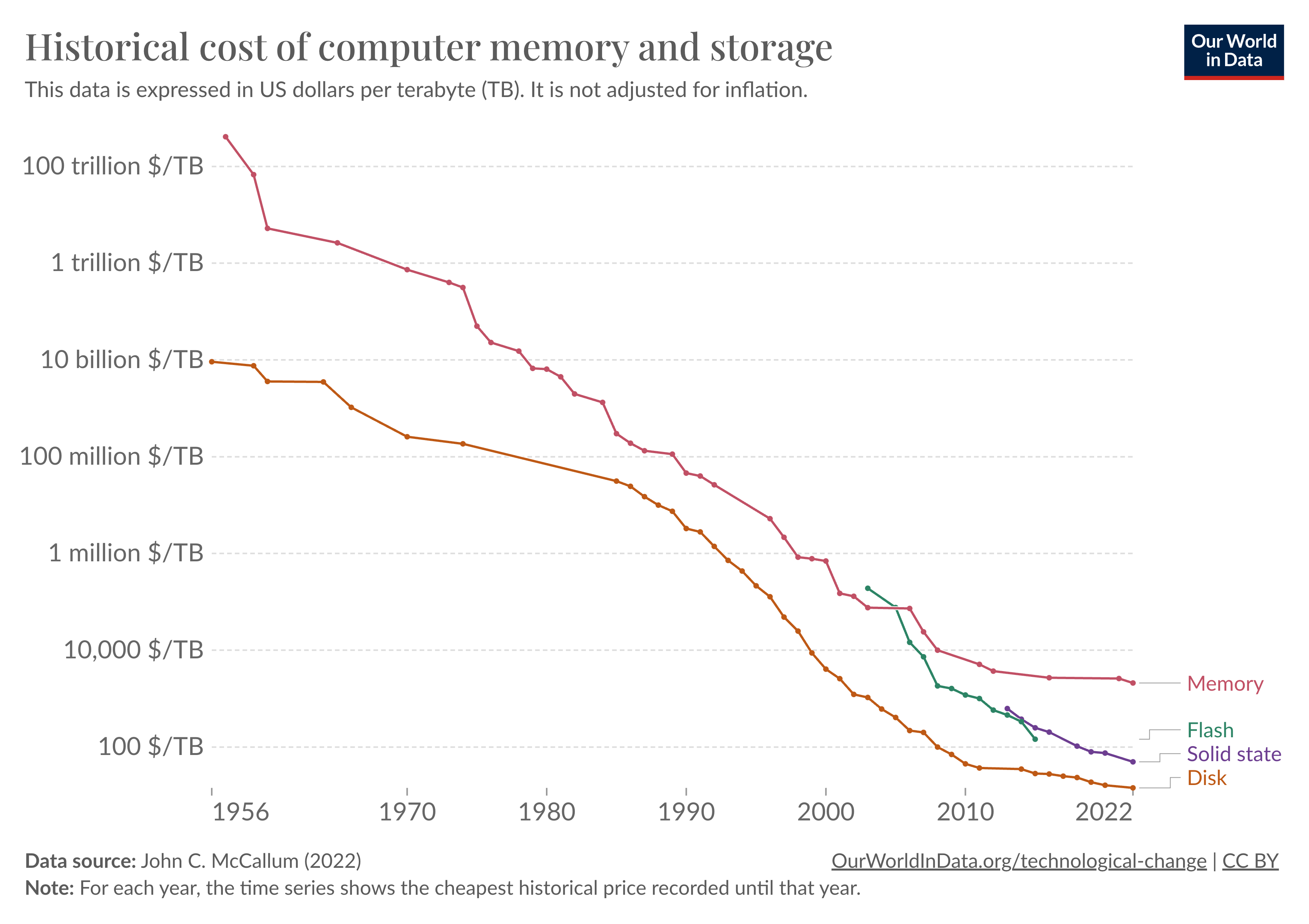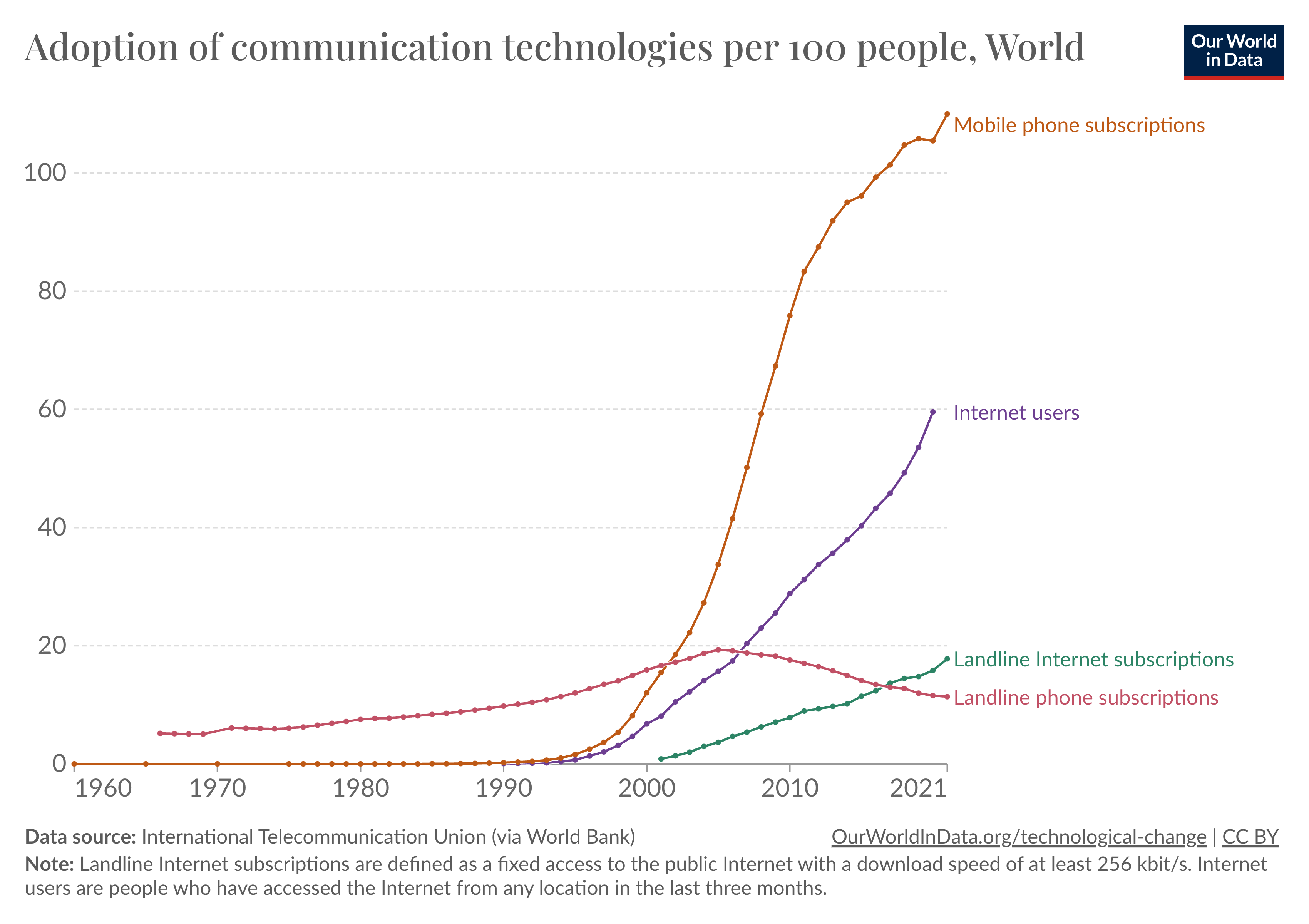Defining Computational Social Science
What exactly is “computational social science”?
Background
Advances in computing have facilitated two trends:
- Computers are getting smaller and cheaper.
- Computing is becoming more ubiquitous.


The effects of these trends are visible on the social sciences. For example, advances in processing power and computational algorithms have enabled new approaches to statistics which rely on Bayesian inference (Fienberg 2006, 24). From a more human-centered perspective, interactive computational technologies enable new forms of collaboration between scientists, though not necessarily an increase in productivity (Goldstein 2023).
At the same time, the ubiquity of computation continues to produce rich datasets with great potential for social science analysis (King 2011). Further, the new communication methods have become areas of study in and of themselves (boyd and Ellison 2007).
References
boyd, danah m., and Nicole B. Ellison. 2007. “Social Network Sites: Definition, History, and Scholarship.” Journal of Computer-Mediated Communication 13 (1): 210–30. https://doi.org/10.1111/j.1083-6101.2007.00393.x.
Fienberg, Stephen E. 2006. “When Did Bayesian Inference Become "Bayesian"?” Bayesian Analysis 1 (1). https://doi.org/10.1214/06-BA101.
Goldstein, Ezra G. 2023. “Communication Costs in Science: Evidence from the National Science Foundation Network.” Industrial and Corporate Change, June. https://doi.org/10.1093/icc/dtad025.
“Introduction.” 2018. In Bit by Bit: Social Research in the Digital Age, 1–12. Princeton: Princeton University Press.
King, Gary. 2011. “Ensuring the Data-Rich Future of the Social Sciences.” Science 331 (6018): 719–21. https://doi.org/10.1126/science.1197872.
King, Gary, Jennifer Pan, and Margaret E. Roberts. 2013. “How Censorship in China Allows Government Criticism but Silences Collective Expression.” American Political Science Review 107 (2). https://doi.org/10.1017/S0003055413000014.
Lazer, David M. J., Alex Pentland, Duncan J. Watts, Sinan Aral, Susan Athey, Noshir Contractor, Deen Freelon, et al. 2020. “Computational Social Science: Obstacles and Opportunities.” Science 369 (6507): 1060–62. https://doi.org/10.1126/science.aaz8170.
Lazer, David, Alex Pentland, Lada Adamic, Sinan Aral, Albert-László Barabási, Devon Brewer, Nicholas Christakis, et al. 2009. “Computational Social Science.” Science 323 (5915): 721–23. https://doi.org/10.1126/science.1167742.
O’Reilly, Tim. 2005. “What Is Web 2.0.” O’Reilly Media. https://web.archive.org/web/20130424204457/http://oreilly.com/web2/archive/what-is-web-20.html.